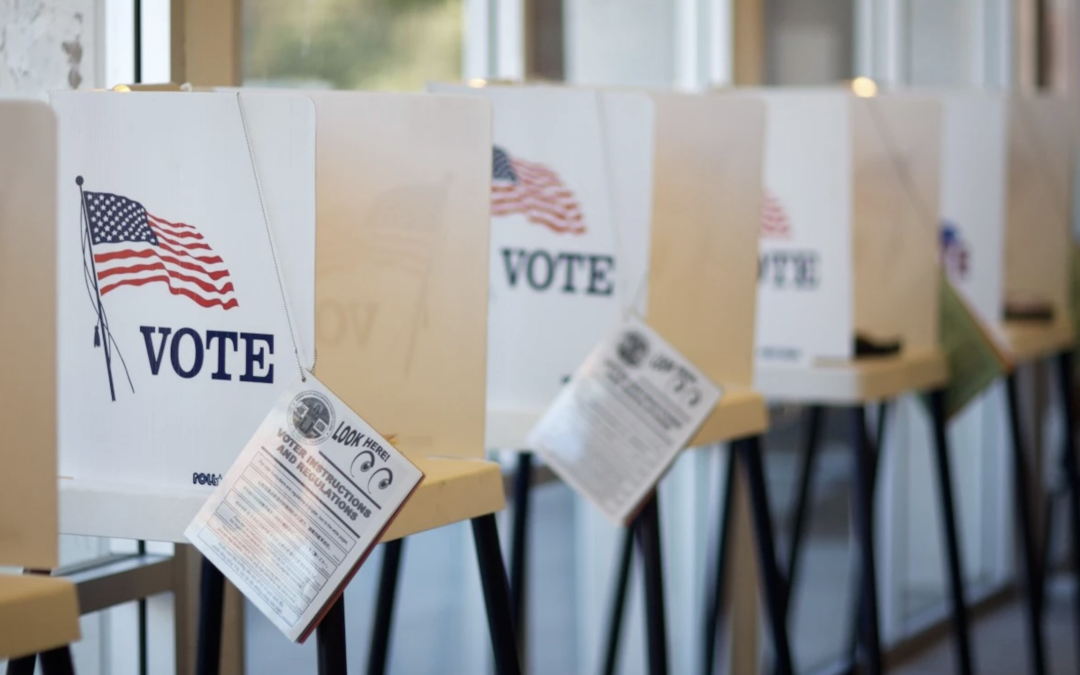Austin Merkel, Elizabeth Meyer, Grace Robertson, Simon Rysin, Kuro Tawil, Arthur Yong
In 2016, disinformation and the steady erosion of distrust in the election became increasingly apparent as they intertwined with campaign narratives. According to the “Journal of Economic Perspectives,” three main variables align with the public’s understanding of how subtle disinformation spreads. First, heavy media consumers and those with segregated social networks are more likely to believe in ideologically aligned articles. Second, the point estimate implies that a 0.1 (10 percentage point) increase in the share of social media friends that preferred the same presidential candidate is associated with a 0.0147 (1.47 percentage point) increase in the belief of ideologically aligned headlines relative to ideologically crosscutting headlines. And third, “undecided” adults are less likely to believe ideologically aligned articles than more decisive voters. Increase in digital aspects of campaign strategy are aligned with a more powerful spread of disinformation that erodes institutional trust.
This study showed the difference in public beliefs across demographics about consuming various aspects of news content, including headlines on individual characteristics, accurate, false, all headlines, social media, and party affiliation. The conclusion communicated the overall exposure to and effectiveness of fake headlines, a persuasive technique in the 2016 campaign between Clinton and Trump. The study also coincides with the U.S. Department of Justice’s statement that “From June 2016 until the end of the presidential campaign, almost all of the U.S. rallies organized by the IRA focused on the U.S. election, often promoting the Trump Campaign and opposing the Clinton Campaign” (31). These studies reveal how the public perceptions of candidates are influenced by media publishers and biases that push towards one candidate or another. These headlines circulate to catch the attention of high media consumers and influence people’s voting causing skews in voting numbers.
Demographic context influences voter behavior as well, and effective disinformation campaigns take this into account. According to the US Census Bureau, in 2016, citizens 65 years and older reported higher voter turnout (70.9 percent) than 45- to 64-year-olds (66.6 percent), 30- to 44-year-olds (58.7 percent) and 18- to 29-year-olds (46.1 percent). Disinformation and misinformation are highly circulated in elderly populations through ads and social media platforms, such as Facebook. Social media takes a large presidential role in everyday life and is increasingly influential.
Especially for older adults living alone, social media provides a tool for connection and social contact despite physical isolation. A consequence of this increased use is often increased exposure to disinformation online that is not paired with detailed understanding of the technology and the potential resulting harm. Considering this, older generations with favored attitudes toward social media voted more frequently, directly contributing to the link between Internet discourse and polling results. Polarization concerning political messaging in the online sphere only continued to increase that year. Because of public distrust in the electoral system, news sources and the government, there was heightened sensitivity into any campaign that could be construed as “disinformation” – regardless of whether the content was accurate or not.
The 2020 election included more public discussion of disinformation as a national security threat following investigations into Russian election interference in 2016, but the issue was often framed through a partisan lens, conflating the question of Trump campaign knowledge and coordination with discussion of disinformation as a standalone issue pursuant to the question of US preparedness for information warfare. his partisan tint is shown through a shift in attitudes about 2020 election integrity across parties. Prior to the election, Democrats were much less confident in the upcoming 2020 election because of Trump. However, these partisan attitudes that flipped completely after the election. Republicans asserted an improper election and/or foul play at a far higher rate than Democrats.
The 2020 election shows that it is difficult and inefficient to change attitudes after disinformation has taken root. The stark increase in polarization since 2016 is reflected in the divergent attitudes held by Republicans and Democrats surrounding the trustworthiness and role of the media. Republican distrust of establishment news outlets grew dramatically, a microcosm of the corrosive power of disinformation over political institutions. Polarization is, unfortunately, a self-reinforcing trend: polarization and division breeds more of the same. Increased polarization from 2016-2020 can be thought of as both a residual consequence of 2016 disinformation and of irresponsibility on the part of political entrepreneurs. It is impossible to quantify how factors related to Trump himself and his cult of personality intermingled with the effects of disinformation, but repetitive charges of “fake news” and conservative censorship were extraordinarily effective in promoting mistrust of establishment media. This laissez-faire attitude accepted, and even somewhat encouraged, ignorance of the disinformation threat to the US as a whole, and showed that Russian 2016 disinformation did indeed achieve its goals of sowing discord – regardless of the extent to which it actually changed voters’ minds in 2016.
Heightened awareness of disinformation was met with a more subtle Russian effort. Though Putin authorized his troll farms to conduct a social media influence operation designed to favor Trump, Russia departed from its 2016 strategy by either not attempting or not succeeding in meddling with physical election infrastructure. It is an open question the extent to which investigations such as the Mueller report and the resulting diplomatic name-and-shame tactics actually slowed Russian efforts. According to Gallup, the majority of voters have not been confident about the honesty of US elections since, 2012, a number that peaked at 69% in 2016. 2016 This number decreased to 59% during the 2020 election, showing some bounce back in voter confidence, but the election denialism that followed the election and led to the events of January 6 show that disinformation that attacks the integrity of our institutions is an existential threat that requires responsibility from US elected leaders and an ability to view the long-term picture.

